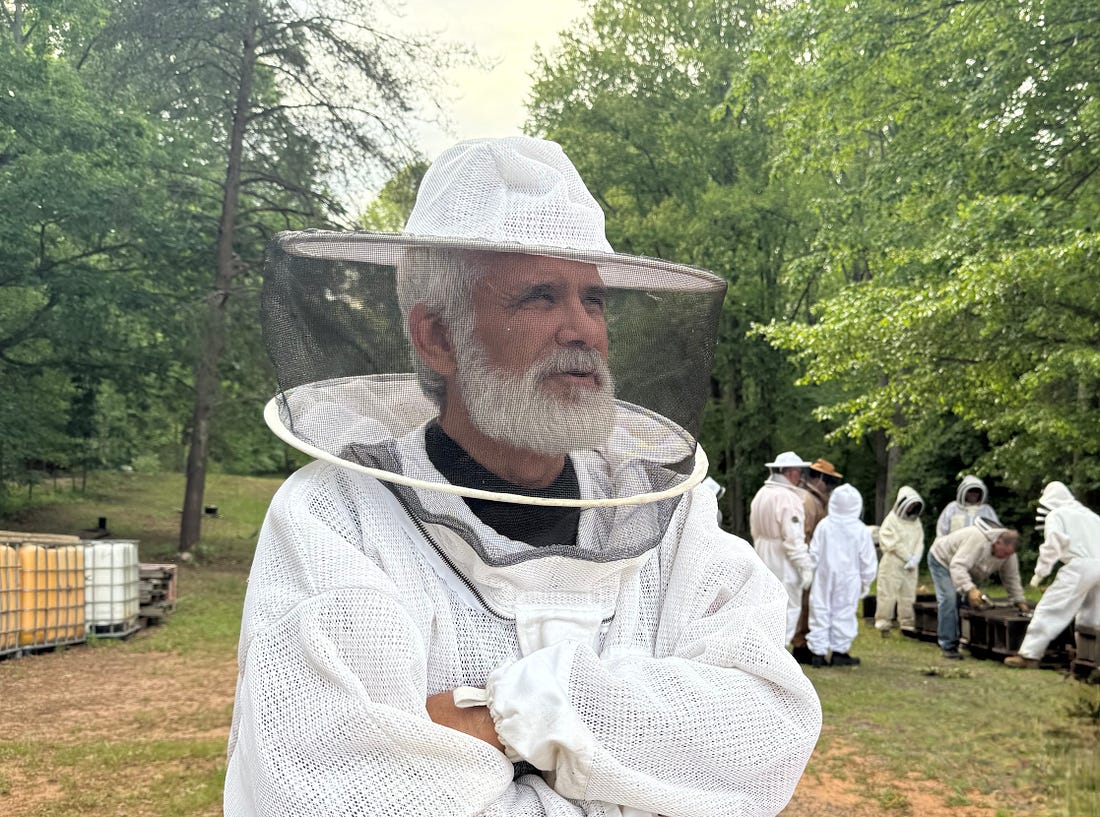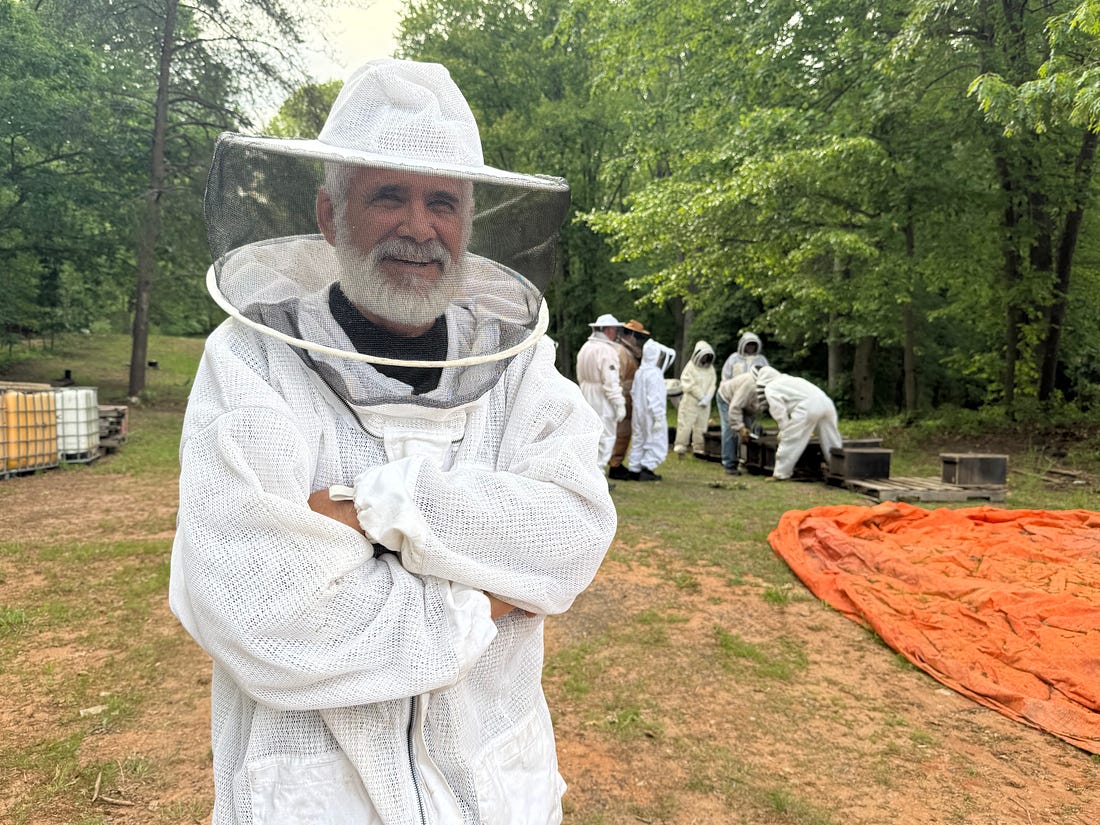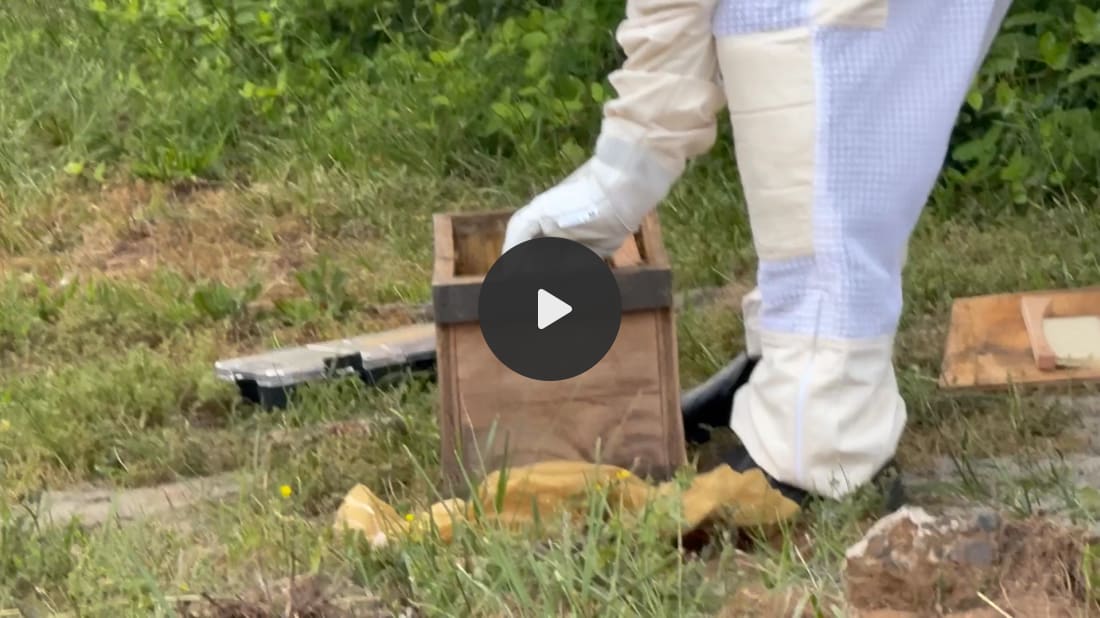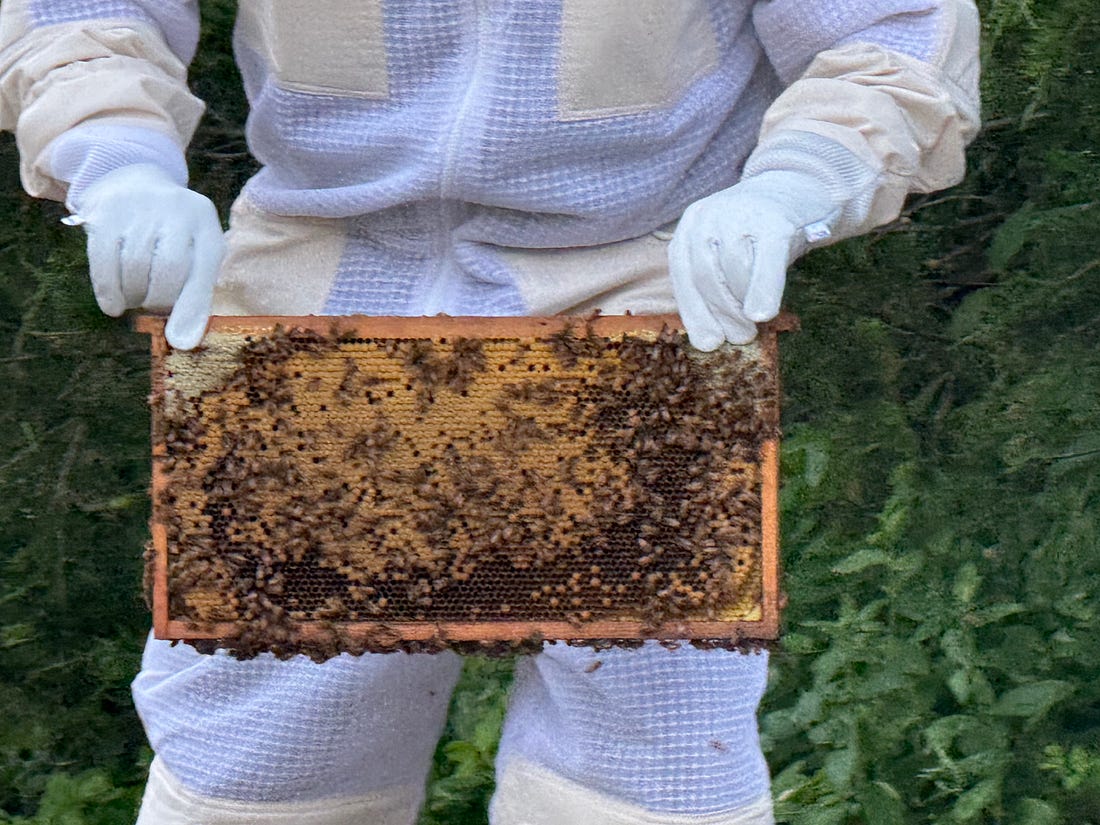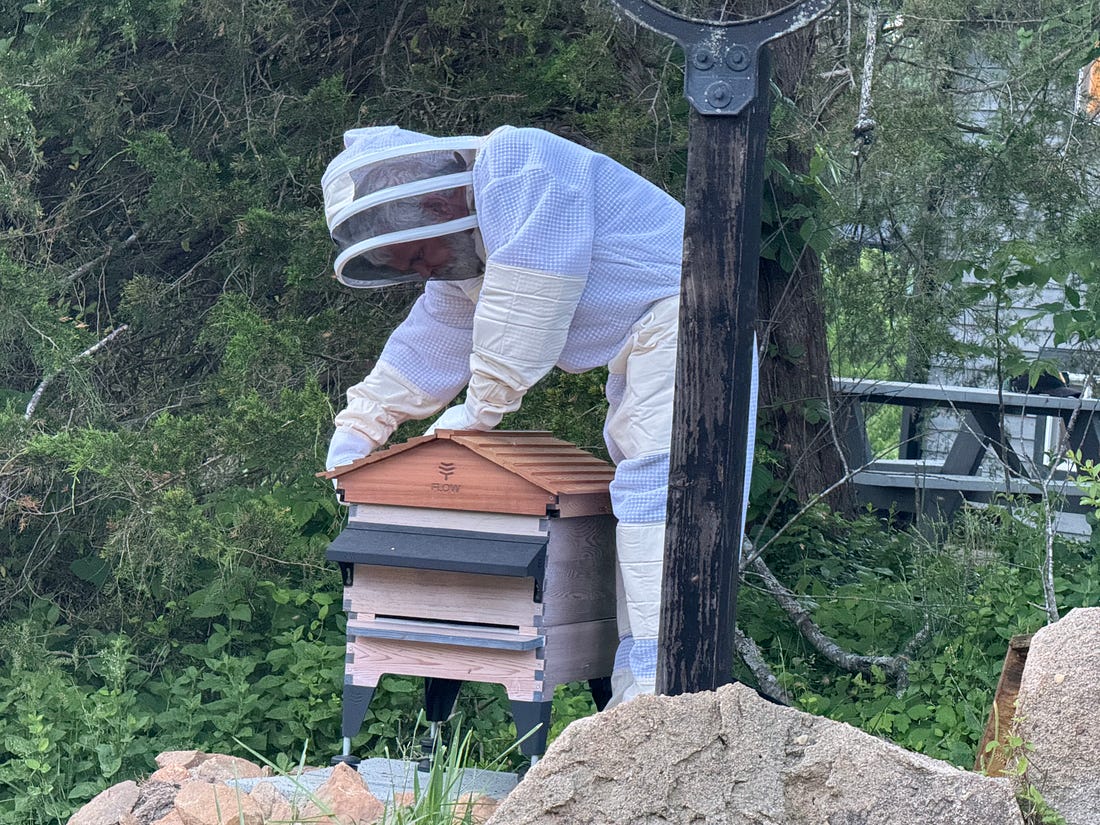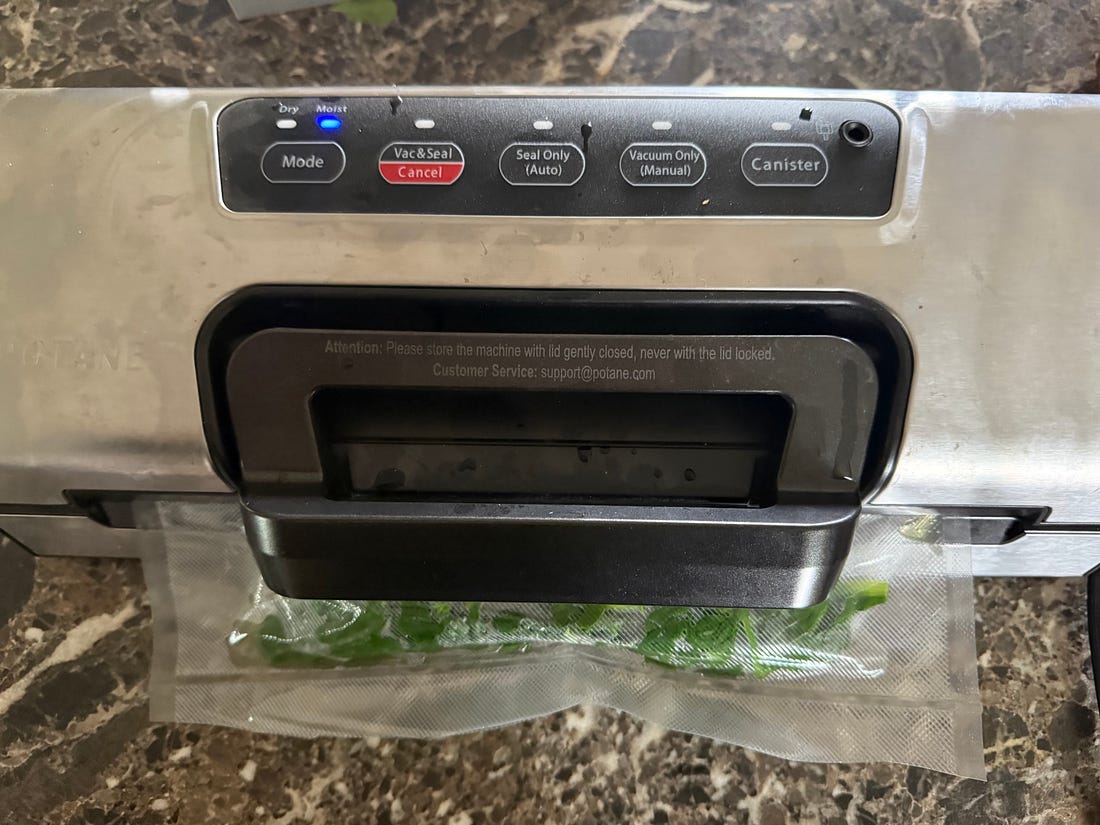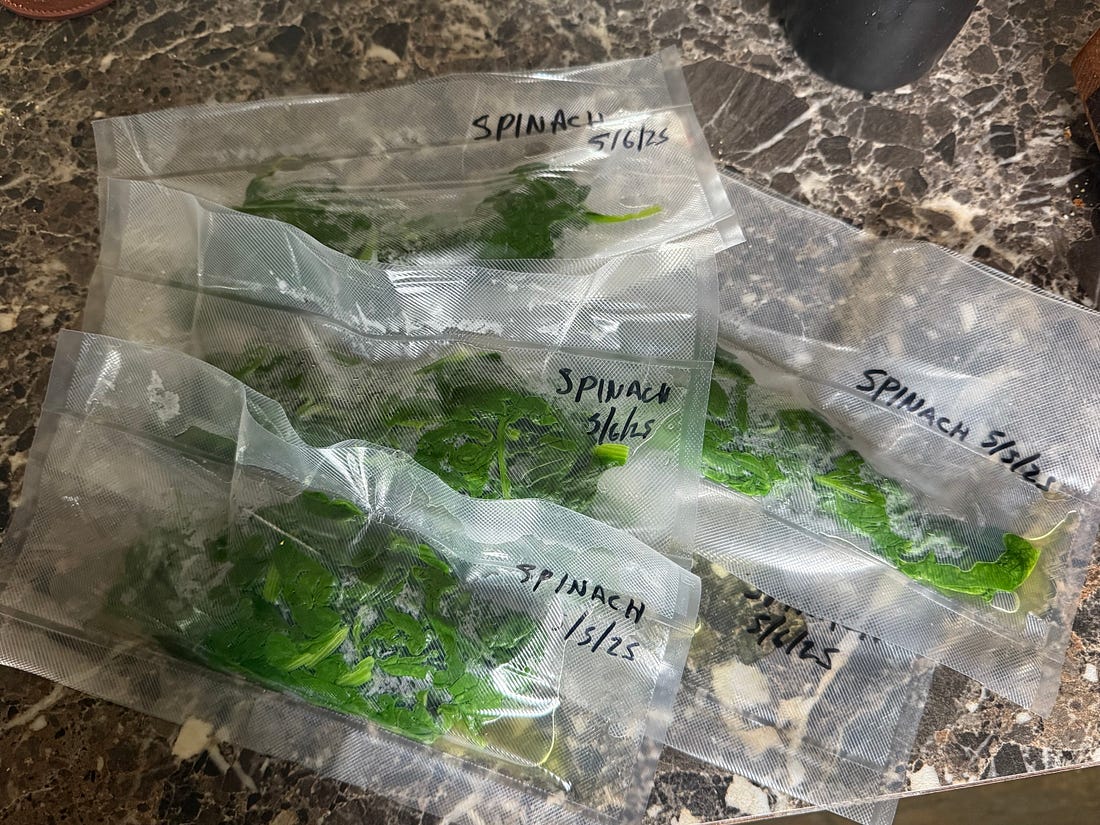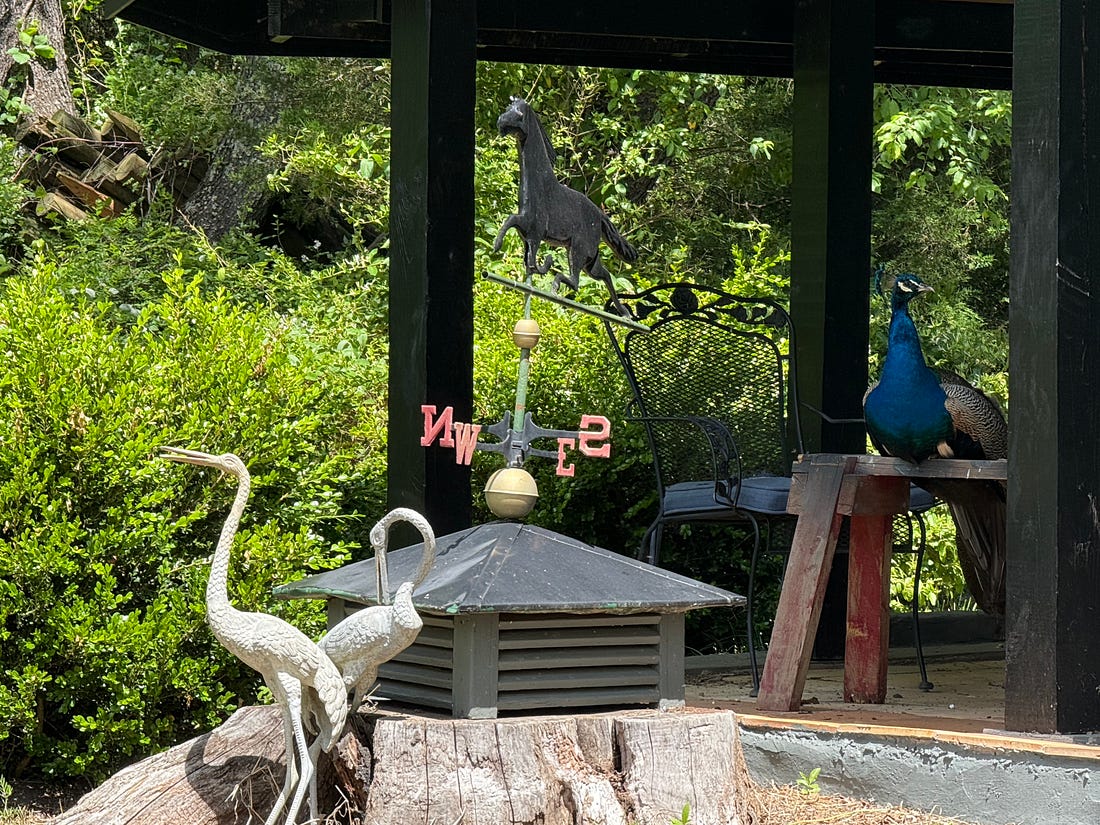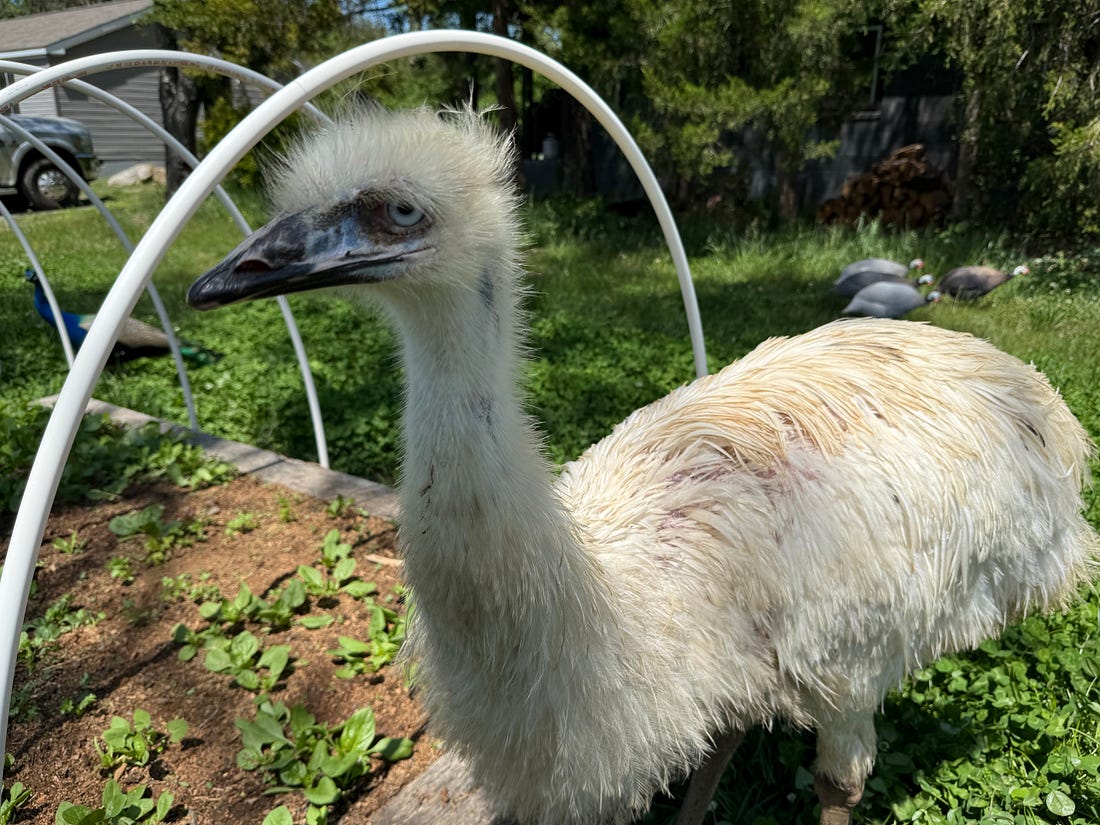A light rain is pouring down outside of the bedroom window where I am writing. Cold, grey, and dreary is the unofficial forecast for the day.
But the verdant green of the farm shines in bright relief to the shadowy skies.
On Saturday, we flew back to DC from a conservative meeting and then drove an hour to pick up our “nuc.”
A "nuc" (short for nucleus colony) is a small, self-contained honey bee colony designed to serve as the core or "nucleus" from which a full-sized colony can grow.
A nuc typically contains a laying queen, worker bees, brood in all stages (eggs, larvae, and pupae), and frames with honey and pollen stores. The bees in a nuc are usually related to each other and to the queen, making them a cohesive unit. Most nucs are housed in a smaller version of a standard bee hive, and only holds three to six frames.
This is me, pretending to know what I am looking at.
So, we drive through the beautiful Virginia countryside to arrive at the apiary (that is a bee farm), where a group of us have gathered. All of us are here to pick up our small, recently started hives - in the transportable nuc boxes.
So starts our journey into the world of bees.
We all inspect the hives and each of us choses a nuc. In my case, I rely on the knowledge of one of the crew, who takes pity on a newbie and guides me through the process. Then the top of the nuc is screwed down and the entrance is closed off.
Once home and the dogs are let loose, I turn to add the frames into our “brood box.” A brood box is a simple box designed for the bees to settle and make their own supply of honey, before the rest of the hive assembly is added. That is called a super and is added to the top of the brood box once the brood box is filled with honeycomb and honey.
Gently, I move the frames from the nuc into the brood box.
Here is what a typical nuc frame looks like:
After the nuc frames are added in, empty frames are placed into the brood box to support more honey development.
Finally, once the frames are all moved in, the roof is fixed back on the bee hive brood box.
Job done!
Of note, the next day, we put out a chick waterer filled with a one-to-one mixture of sugar and water, placed near the hive to get the bees well-fed as the little creatures learn their new living area.
Spring has lasted a remarkably long time for Virginia. Although, truth be told, we have been in a bit of a drought.
Since the hot weather hasn’t really arrived yet, the spinach, cilantro, and lettuce continue to produce without bolting. Bolting is is the word for when greens shop producing leaves, shoot up in growth, and send out flowers.
Jill picked about five pounds of spinach last week, which she processed for freezing
.
The basic idea is that the spinach leaves are picked, rinsed, and then thrust quickly into boiling water for less than thirty seconds. The sink has been filled with cold water, where the wilted leaves are plunged to stop the cooking process. The spinach is then removed from the water, and the excess water is squeezed out of the mass of leaves by hand, and dried off with a tea towel.
A vacuum sealer was used to package the greens. Glass jars would also work for freezer storage, and are probably a better option due to microplastics if one has the extra room in their freezer. Microplastics in the freeze bags are an issue that Jill continues to grapple with.
Packages of spinach were dated before being placed in the freezer, so if multiple batches are frozen, the oldest can be used up first.
The final product yields only a few cups of spinach, but enough to add to many meals for extra nutrition and flavor.
This week, Jill will be processing more spinach.
Of note, the lettuce for salads has been excellent this year - the netting over the raised bed greatly improves the quality, as the bugs aren’t eating, defecating on, and laying their eggs on the underside of the lettuce. The netting also enhances longevity of the crop and keeps water in the soil longer.
This beauty has discovered the shady porch of the recording studio. He sure makes a pretty picture, but his feces on the porch are rather obnoxious.
Yesterday, a weanling filly that we sold a while back went to her new home.
There was lots of preparation for the big day, as loading a young horse into a trailer for the first time can be stressful. But with complete trust, she went up the ramp with Jill. We couldn’t have been more proud.
We have one more filly to sell this spring. Due to her furry winter coat and her needing a bit more socialization from humans (she was the youngest and a bit shy), we held back from really advertising her. But this is Umbrielle.
A super flashy filly that is going to make someone very happy, and I am sure will sell quickly.
Jill is not someone who “likes’ the process of selling. For that matter, neither do I, and I am afraid that Jill ends up having to do the lion’s share of that job. But if you have a small farm or homestead, direct marketing to consumers is a necessary part of the job.
We use video, photos - and that includes using various techniques for online selling such as changing out the background so the confirmation of the horse is more visible to the potential buyer.
Social media is important, but so are online ads.
Having a business and marketing plan can be helpful.
We debated back and forth for months on Gizmo the Emu’s gender, but then Gizmo started the deep-throated dino-sounds called a grunt that boys make.
Well, it turns out that young shemus also makes that grunting sound, and then they learn to drum.
Today, Gizmo started to drum.
Gizmo is a girl!
An emu drum refers to the deep, resonant drumming or booming sound produced primarily by female emus. This sound is a distinctive, low-frequency, non-vocal noise that can carry over long distances-sometimes up to two kilometers. The drumming is described as a series of thumping or booming notes, often with a pulsating rhythm and intervals of about 0.2–1.0 seconds between beats.
-CHAT-GP3
Thanks for reading Malone News! This post is public, so feel free to share or crosspost! Any help is appreciated.
Share
Give a gift subscription



